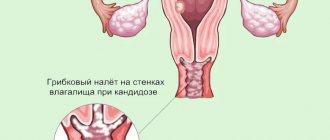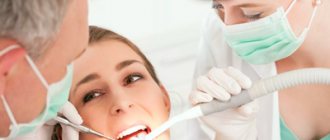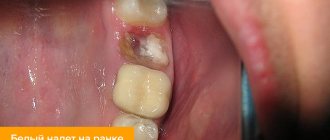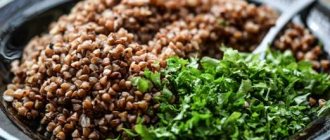Pharmacology and pharmacodynamics
The gel helps fight inflammation, relieves pain and has an antimicrobial effect.
The active substance perfectly anesthetizes the area to which the gel was applied and eliminates inflammation. The analgesic effect lasts for 3-8 hours. Another active component has an antiseptic effect, killing harmful microorganisms.
The medicine has a certain structure, due to which it penetrates well into the tissue and remains on the oral mucosa for several hours. Almost does not enter the blood circulation.
Gel Cholisal: analogues and prices
Gel Cholisal - the price for March 2022 is about 370 rubles.
The Polish drug has a direct analogue - “Mundiesel gel”, but its cost is higher, and the contents of the tube are only 8 grams.
The following drugs have a similar therapeutic effect:
- Kamistad.
- Dental.
- Dentamet.
- Deoxynate.
- Periodonticide.
- Metrogil Denta.
- Anti-Angin.
- Faringosept and others.
When to use
The gel is prescribed in the following cases:
- stomatitis;
- cheilitis;
- damage to the integrity of the mucosa due to the use of prostheses or as a result of mechanical impact;
- pain relief after dental surgery;
- when teething in babies;
- other damage and inflammatory processes in the oral mucosa.
Purpose of Cholisal gel
Dentists recommend using Cholisal for the following diseases:
- stomatitis of any etiology;
- periodontitis;
- gingivitis;
- cheilitis (inflammation of the lips);
- oral candidiasis (thrush of the oral mucosa);
- lichen planus in the oral cavity;
- inflammation in the hoods above the wisdom teeth.
Cholisal is also recommended for use in the following cases:
- for damage to the oral cavity: from dentures, injuries, after surgical intervention;
- for pain relief during teething.
Adverse reactions and overdose
In rare cases, side effects may occur. A tingling or burning sensation may be felt at the sites where the ointment is applied. This reaction usually disappears after a few minutes. Various allergies may also appear.
No cases of overdose have been identified to date. The gel does not need to be swallowed, only used topically. If there is a lot of ointment on the mucous membrane, then you need to rinse your mouth well. If the composition gets into the gastrointestinal tract, you need to rinse the stomach. Treatment is carried out taking into account the existing symptoms.
Indications for use of Cholisal
Cholisal is used to treat diseases of the oral cavity, relieves pain, relieves inflammation in soft tissues in the following pathologies and conditions:
- periodontal disease;
- stomatitis;
- gingivitis;
- periodontitis;
- injuries from wearing prostheses;
- mechanical damage to the gums;
- painful symptoms from teething;
- lip inflammation;
- fungal infections;
- microsurgical manipulations in the mouth;
- development of lichen planus;
- Stevens-Johnson syndrome.
When to use Cholisal is not recommended:
- An allergy to the components was detected.
- Until the child is one year old.
- Pregnant and lactating women.
Side effects of Cholisal: when applied, a slight tingling and burning sensation is felt. The feeling of discomfort goes away in 3–5 minutes. It is possible to develop allergic reactions to the components of the gel.
Reviews
Regarding the use of the gel during teething, you can find mostly positive reviews. The drug quickly and effectively copes with inflammatory processes, relieves pain and cools the affected area. If you use the product the night before going to bed, its effect will last almost until the morning. It also has an antipyretic effect. For many, it is a plus that the composition does not contain lidocaine, since it can provoke various and severe allergies.
There are also many positive reviews when using ointment for stomatitis. Within 3-5 minutes you can notice a significant improvement in your condition, pain and discomfort disappear. Inflammation disappears 15-20 minutes after application. If you apply compresses before going to bed, you can quickly get rid of the problem and its symptoms.
Cholisal: instructions for use
The gel is easy to use. According to the original instructions, Cholisal should be used as follows:
- Adults apply a strip of the product up to 1 cm (children up to 0.5 cm) onto their finger, then distribute the gel over the surface of the affected area of the oral mucosa, rub the product in with light and massaging movements. The procedure must be carried out 2-3 times a day, but only after meals and before bed.
As you can see, the instructions tell you only the most important things about the application, but the method of using the gel in different clinical situations is completely different. Let's take a closer look.
The use of Cholisal for gum inflammation.
Gingivitis and periodontitis
– serious dental diseases that require complex therapy. Treatment should begin with removing deposits on the teeth, then you need to take courses of rinsing with antiseptics, include Cholisal in therapy and replace regular toothpastes with anti-inflammatory ones.
If you start using dental gel immediately, without affecting the cause of inflammation, then the effect of such therapy will be unjustified. Moreover, starting treatment with the gel can only worsen the situation, turning the disease into a chronic form.
Typically, gel therapy for gum inflammation lasts no more than 10 days. The product is applied twice a day - in the morning and evening, always after meals, rinsing with antiseptics and drying the gums with a gauze swab. After the procedure, you are not allowed to eat for the next 2 hours or drink for 30 minutes.
Cholisal, use for stomatitis
For herpetic stomatitis, Cholisal is used exclusively for pain relief from erosions. In case of aphthous stomatitis, there is no point in using the gel, since the disease occurs due to allergies.
Using gel during teething
Adults, children and teenagers can relieve teething discomfort with Cholisal. It is not recommended to use the gel to relieve gum pain in infants, since anise oil stimulates excessive salivation, which can lead to irritation and choking.
The affected area must be treated with the product, after drying the mucous membrane with a gauze swab. The procedure can be repeated about 3-4 times a day. This medicine is used only in the absence of swelling of the cheeks, suppuration and other serious complications.
Treatment of candidiasis (thrush) of the oral cavity
Treatment of oral candidiasis in an adult should be aimed not only at combating the pathogen and eliminating unpleasant symptoms, but also at treating chronic diseases and other conditions that cause a decrease in immunity and activation of pathogenic flora. Conventionally, treatment can be divided into general and local.
General therapy.
The basis for treating oral thrush in adults is taking medications that have a systemic effect on the entire body. These are antifungal agents (polyene antibiotics or imidazoles) that kill candida not only in the oral cavity, but throughout the body. In addition, as part of treatment, antimicrobial and antiparasitic drugs may be prescribed to stop the growth of the fungus. General strengthening therapy aimed at increasing and maintaining immunity also plays an important role. Vitamins of group B, C and PP can be used for this. They stimulate redox processes in the body and strengthen its natural defenses. The general treatment of oral thrush may also include other medications, for example, calcium gluconate, antihistamines, iron supplements, etc. All medications must be selected individually by the doctor. In addition, treatment for oral thrush includes following a diet. It is necessary to exclude sweets and yeast products, as they provoke the development of candidiasis. Spicy, sour, salty or very hot foods irritate the mucous membranes, increasing unpleasant symptoms, so you should also avoid them.
Local therapy.
In the treatment of oral thrush, agents that act directly on the mucous membrane play an important role. They help relieve unpleasant symptoms, stop the growth and reproduction of candida, and restore tissue damaged by the fungus. This can include applications with iodine-based compounds, rinsing with alkaline solutions and disinfectants, and sucking lozenges with bactericidal properties. Special dental gels have proven themselves to be effective in the treatment of candidiasis. An example of such a product is Cholisal®. It has a local analgesic and anti-inflammatory effect. The antiseptic included in the composition prevents the development of pathogenic bacteria. The analgesic effect occurs within 2-3 minutes and lasts for 2-8 hours.
An important role in the treatment of oral candidiasis is played by visiting a dentist in order to eliminate dental diseases, malocclusions and prosthetic errors. In addition, it is important to maintain oral hygiene: brush your teeth twice a day, use mouthwash after meals. Dentures must be treated with antifungal agents during treatment.
On average, treatment for oral thrush in adults lasts 14-21 days. Therapy should be continued for the time specified by the doctor, even if the symptoms have passed. This will avoid relapse of the disease.
Learn about other oral diseases
Gum hypertrophy Tartar Glossitis Fluorosis
Cholisal's analogs
Many buyers are looking for something to replace Cholisal with. This is not surprising, because the average cost is 400 rubles.
List of cheap analogues of Cholisal with prices.
| Analogue | Price in rubles | Manufacturer country |
| Holisal | 350-400 | Austria |
| Candide | 300-500 | India |
| Dentamet | 110-180 | Russia |
| Anti-Angin Formula | 350-400 | Netherlands |
| Dantinorm | 1000 | France |
| Metrogil Denta | 250-300 | India |
| Kamistad | 250-350 | Germany |
| Stomatophyte | 220-280 | Poland |
| Solcoseryl | 380-450 | Switzerland |
| Faringosept | 180-230 | Romania |
| Asepta | 160-300 | Russia |
| Dentinox | 380-420 | Germany |
| Dantinorm Baby | 1000 | France |
| Leader Baby | 230-280 | Russia |
| Kalgel | 450-500 | Poland |
The most popular children's dental analogs of Cholisal gel include such products as Kamistad, Metrogyl Denta, Kalgel, Solcoseryl, Asepta. Let's take a closer look at the listed medications.
Special instructions for the use of the drug Cholisal
The drug is used only locally. No study has been conducted regarding the duration and extent of absorption of choline salicylate after topical application of the gel to the mucous membranes of the oral cavity. During pregnancy, use with caution, taking into account the risks/benefits. Salicylic acid derivatives are contraindicated in the third trimester of pregnancy. The substances pass into breast milk, so it is not recommended to use them during breastfeeding. Cholisal does not affect the ability to drive vehicles or operate complex machinery.
Cholisal Dental or Cholisal gel – which is better, what’s the difference
Manufacturer: PHARMACEUTICAL WORKS JELFA, Poland
Release form: gel
Active ingredient: atropine, aprotinin, propylene glycol, peppermint oil
Synonyms: Cholisal, sage leaves, Fitosept
Cholisal Dental does not contain NSAIDs and antiseptics, unlike Cholisal gel. This is a cosmetic product, the drug is used for preventive purposes from the age of 14. The Dental form prevents unpleasant odor and the development of inflammation when wearing dentures and braces. Structures in the mouth can create difficult to reach areas for cleaning. Food gets into them and bacteria spread.
Holisal Dental is used daily 2 to 4 times a day. After brushing your teeth, apply with a special applicator, which comes complete with the gel.
Unlike Cholisal gel, the drug is not used when teething.
Holisal or Kamistad - which is better for stomatitis
Manufacturer: STADA Arzneimittel, Germany
Release form: gel
Active ingredient: lidocaine, chamomile extract
Synonyms: Dentinox, Fitosept, Maraslavin, Stomatofit
Both drugs are used in dentistry for pain and inflammation. Cholisal is more aimed at treating inflammatory processes with a slight analgesic effect. The Kamistad analogue gives a pronounced anesthetic effect because it contains lidocaine.
For severe pain, it is better to use Kamistad gel. Dentists use it as a local anesthetic, but the method is not used often. Chamomile extract acts as an anti-inflammatory component.
For children, Kamistad Baby is produced - a brown-yellow gel with mint, chamomile and honey aroma. To use, you need a small pea-sized amount of product. Apply 3 times a day after meals and before bed. The Kamistad analogue will relieve the discomfort of the first symptoms of teething within a few minutes.











